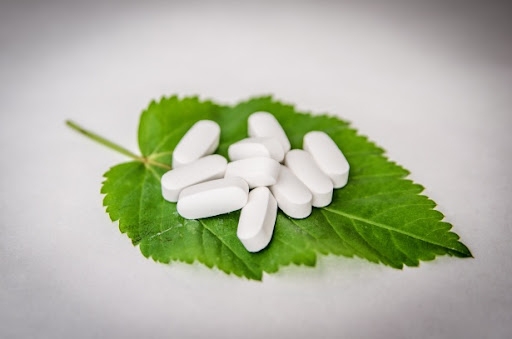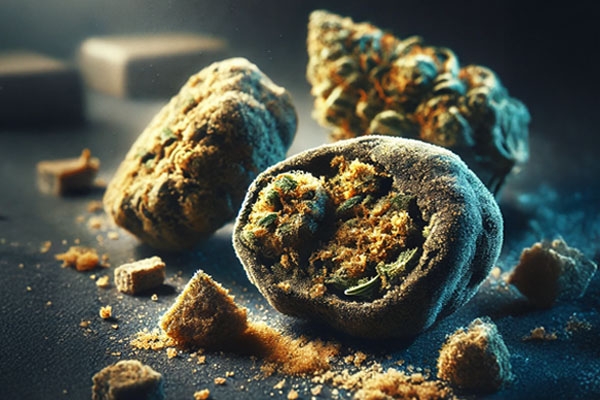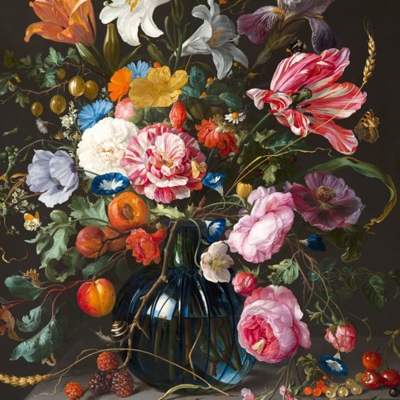Create your own Psychoactive Dream Garden
Get a head start and don't wait for spring! If you start planting seeds now, you can expect stronger plants and before you know it you will have a beautiful garden with psychoactive properties.
Morning Glory
Morning Glory are beautiful creeping plants with flowers in different colours from pink, purple to white. They contain, like Hawaiian Baby Woodrose, the psychedelic substance LSA. This substance is related to the substance LSD but less intense.
- Morning Glory doesn't like repotting, so choose a permanent nursery with a diameter of 0.5 meters and a depth of 0.5 meters.
- If you want to put the plant in the ground later on, choose a small peat pot (you can put this in the soil, it will decay by itself) of 7.5 cm deep.
- Plant the seed shallow in moist soil. Make sure the soil is well drained.
- Place the pots near a window facing south, or with as much light as possible. The ideal temperature is 20 to 30 degrees Celsius.
- Between 5-21 days the seeds will sprout. Make sure the soil remains moist but not soaking wet.
- As soon as the last frost is over and the roots are well anchored, you can put the pots outside. Let the plants get used to the light, by first leaving them in the shade for a few days and then moving them to more direct light.
- Morning Glory is a climbing plant. Provide a sturdy stick around which they can shop. This is needed when the plant is about 15cm. Alternative idea is to place the plant in a basket and drape the tendrils over it.
- When your Morning Glories are mature they need very little water. In damp or cool conditions they do not need any water at all.
Hawaiian Baby Woodrose
For Hawaiian Baby Woodrose similar growing techniques apply as Morning Glory. A very nice elegant creeper with large flowers. The big difference is that HBW grows much slower than Morning Glory.
- It is very important to choose a spacious breeding tank so that the roots have free play. A 75 litre container is recommended.
- The seed has a very thick skin, so it is best to make a slight notch on the other side of the seed eye.
Anadenanthera Colubrina
Anadenanthera Colubrina is a tropical legume tree and occurs in South America. Full-grown it can grow up to 20 meters high. The leaves of this tree are deep green and fern-like. The brown pods contain seeds that have psychedelic properties. The seeds contain bufotenin and in small amounts DMT and 5-MeO-DMT. From the seeds a hallucinogenic snuff is made, called cebil. The tree also has deliciously fragrant flowers.
- Soak the seeds overnight in water.
- Make a soil mix of equal parts of horticultural sand, perlite or vermiculite. Since the seeds rot easily, it is better not to use a growing medium of organic material. Take small pots (2inch) and fill them with the soil mix. Then spray the medium with water and wait for the water to drain away.
- Place a seed in each pot. Do this by pressing the seed lightly on the surface of the soil. Then cover with a thin layer of perlite or vermiculite. This protects the seed and allows air and light to reach the seed.
- Place the pots inside in a sunny spot, or provide artificial light. In terms of heat, the air should be about 24 degrees Celsius and the temperature of the earth about 21 degrees Celsius. If you use a grow light, place it 25 to 30 cm above the seeds.
- Spray the seeds lightly every day. Within 7 to 14 days the seeds will sprout.
- When the seedlings are about 15 to 18 cm high you can repot them in a large pot. Choose the sunniest location. She likes nutritious soil. Take 2 parts potting soil, 2 parts building sand and 1 part organic compost or well matured manure from herbivores.
- As it is freezing here, it should be kept indoors in the winter.
Poppy Somniferum
Also called poppies, these are beautiful elegant flowers. Available at Sirius in Lila and White.
The seeds can be sown between September and the end of April. The soil should preferably be well fertilized and make sure that water can drain away well.
When you have sown you cover them with a very thin layer of soil. Keep the soil moist until they have germinated. After about a week they sprout. After that you water them every now and then, so they don't rot.
It is also possible to sow in pots (for example if you only have a balcony). It is important that the pots are large enough for healthy root growth.
Mescaline Cactus seeds
Growing your own mescaline cactus from seed is a wonderful exercise in patience. If it can't go fast enough for you, an adult San Pedro, Peyote or Peruvian Torch is a better option. Here you can read how to take care of them.
Requirements for growing your own cactus:
- Sandy, well-drained soil (e.g. commercial cactus soil)
- Small ceramic pots of 5 x 5 cm. Ceramics ensures that everything can dry well and prevents rotting.
- Pieces of cotton
- A tupperware box with transparent hinged lid
- A grow light
Place a piece of cotton in each ceramic jar. This will cover the drainage hole. Then fill the jars with cactus soil.
- Place a seed in the middle of the jar, for this you can best use tweezers, because they are so small. Cover the seed with a very thin layer of sieved cactus soil. Use a tea strainer for this.
- Place the pots in the tupperware box. Fill the tupperware box with a layer of water of about 6.5 mm. This will moisten the jars from underneath. This ensures strong roots. Always use lukewarm water! When you have planted the seeds it is important to spray the top once with a fine mist of water. The soil should be moist but not completely soaked.
- Place the lid on the tupperware box. It is still too cold outside, so place the box inside under a grow light. The ideal temperature for Peyote is between 27- 32 degrees Celsius. For other cacti this is around 21 degrees Celcius. Be careful not to get too hot, this can burn the seeds.
- The tupperware box creates a mini growing greenhouse and should remain closed, except for one daily check to check the position of the seeds to get some fresh air. If any condensation forms on the inside of the lid, wipe it off.
- The seedlings look like small balls. Most species sprout after a few weeks. When this happens, replace the transparent lid of the tupperware box with a piece of gauze cloth. Stretch it around the box using, for example, a rubber band. This creates a good air circulation. To increase this even more you can place a fan.
- When the seedlings have sprouted, sprinkle a thin layer of fine aquarium sand over the surface of the soil. This prevents the soil from drying out as quickly. This also supports growth. Carefully remove any mossy vegetation that may arise due to humidity.
- You can put the box outside when it is warm outside (somewhere between April and July).
- Note that the colour of the seedlings must be dark green. When they are yellowish they get too little light, when they are brown/red they get too much.
- After four to five months (when spines have formed), remove the netting for one to two hours so they can get used to direct light. Now water the seedlings from above, twice a week. Always water around the seedlings. When it is very dry and hot you can water the seedlings lightly. The first winter you keep the seedlings inside. Keep them in the sunniest spot and keep them moist.
Did you enjoy reading this article and do you like to write yourself? We are always looking for people who share our passion for natural products, who can also translate this into great texts. And we have an interesting reward for this. View all information for writers.
Peruvian Torch 20 seeds
 Blog Smart Products
Q&A Sirius smartshop Maastricht and Roermond
For over 25 years Sirius has been the place to buy legal magic truffles, mushroom grow kits, cannabis seeds, CBD oil and much more. Do you like to exp [..]
19-04-2023
8 minutes
Blog Smart Products
Q&A Sirius smartshop Maastricht and Roermond
For over 25 years Sirius has been the place to buy legal magic truffles, mushroom grow kits, cannabis seeds, CBD oil and much more. Do you like to exp [..]
19-04-2023
8 minutes
 Blog Smart Products
What are the Effects of Kratom and how does it work?
Effects from kratom, what can you expect? If you have ever visited the Sirius.nl online smartshop or been to one of our smartshops in person, then you [..]
10-01-2025
14 minutes
Blog Smart Products
What are the Effects of Kratom and how does it work?
Effects from kratom, what can you expect? If you have ever visited the Sirius.nl online smartshop or been to one of our smartshops in person, then you [..]
10-01-2025
14 minutes
 Blog Cannabis
Have you heard of moon rocks, the most powerful weed from outer space?
Have you heard of moon rocks, the most powerful weed from outer space?
Moon rocks, it sounds like something only a stoner could come up with to des [..]
Blog Cannabis
Have you heard of moon rocks, the most powerful weed from outer space?
Have you heard of moon rocks, the most powerful weed from outer space?
Moon rocks, it sounds like something only a stoner could come up with to des [..]













 Nederlands
Nederlands Italiano
Italiano Deutsch
Deutsch Français
Français Português
Português Español
Español Polski
Polski